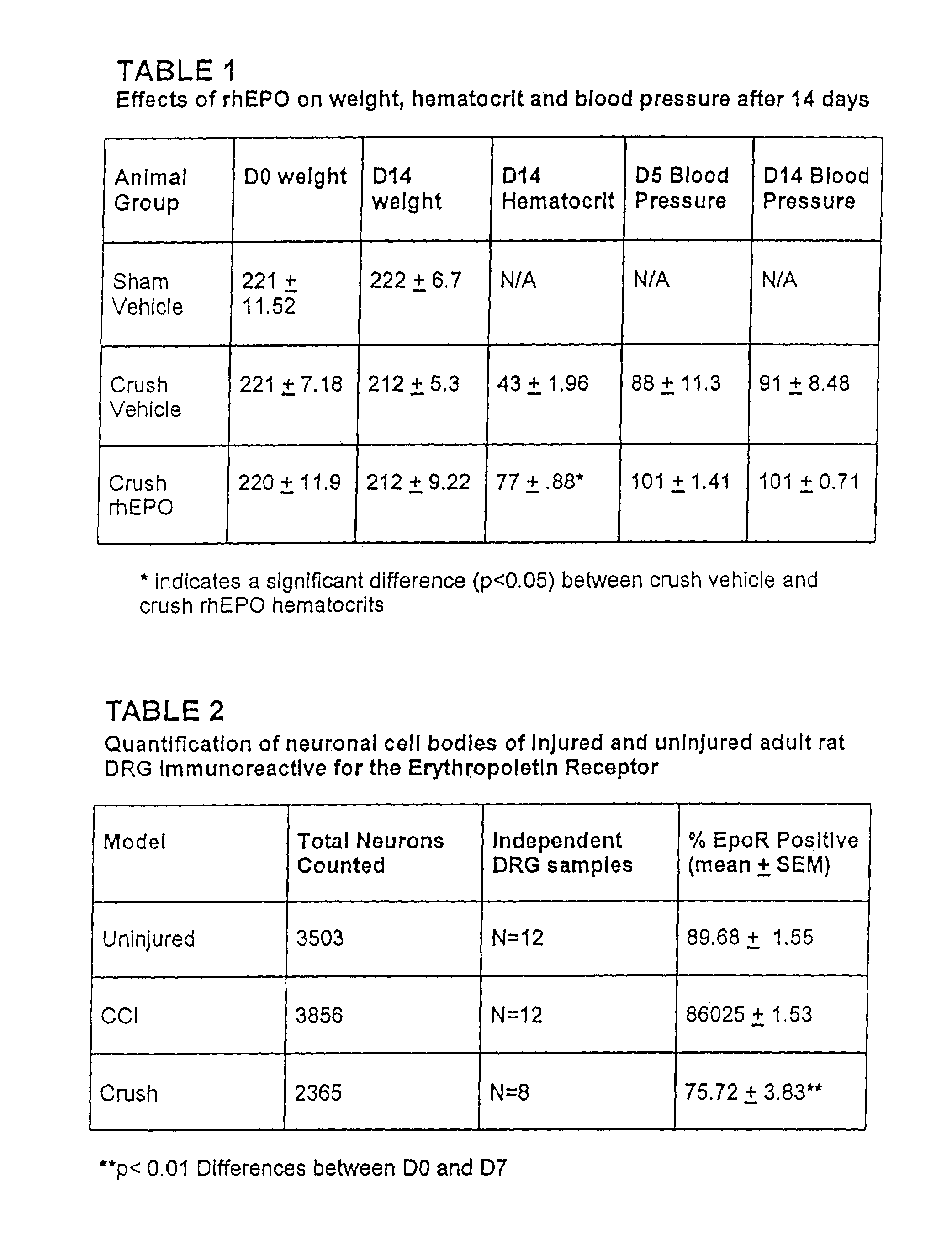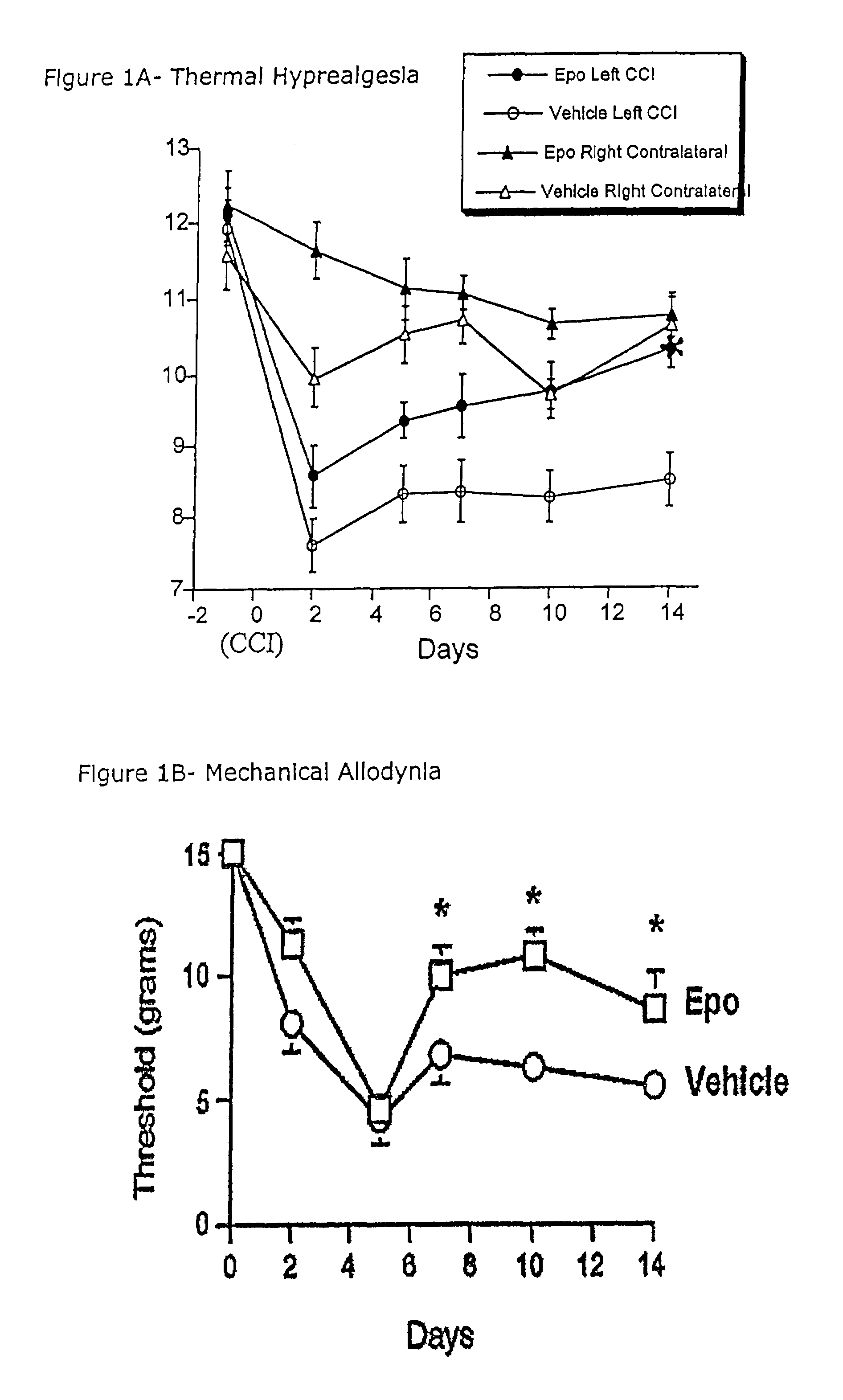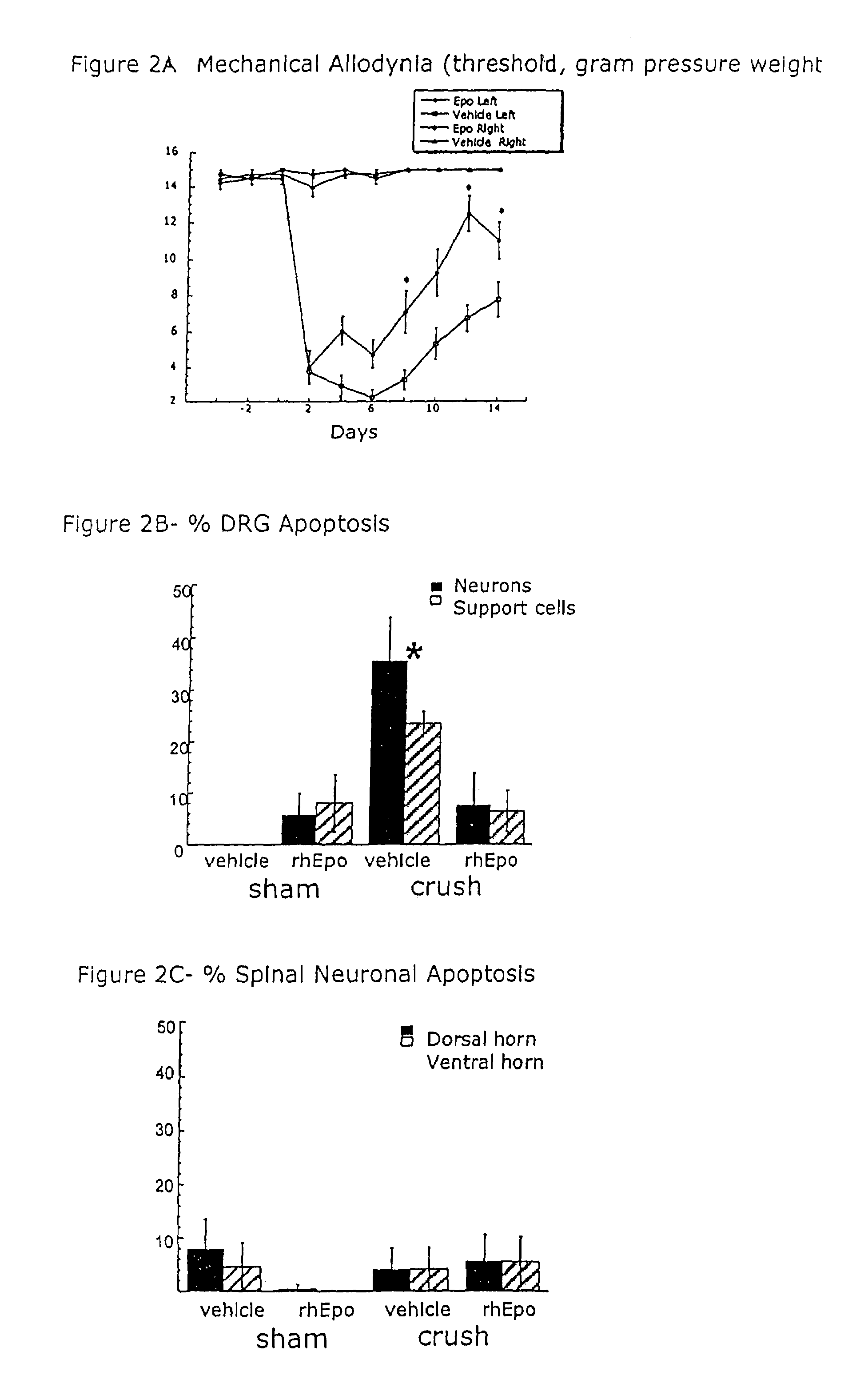Use of erythropoietin and erythropoietin mimetics for the treatment of neuropathic pain
a technology of erythropoietin and mimetics, which is applied in the direction of drug compositions, peptide/protein ingredients, extracellular fluid disorders, etc., can solve the problems of short-lived pain from tissue injury, inability to treat neuropathic pain with common analgesics, and severe side effects of therapies
- Summary
- Abstract
- Description
- Claims
- Application Information
AI Technical Summary
Benefits of technology
Problems solved by technology
Method used
Image
Examples
example 1
[0043]Immunofluorescence and identification of erythropoietin in DRG and sciatic nerve. To identify the presence of Epo in the peripheral nerve, immunohistochemical analysis of sciatic nerve sections of rats with and without CCI injury was performed. Animals were perfused transcaudally through the ascending aorta with 4% paraformaldehyde in 0.1 M phosphate buffered saline (PBS) at postoperative days 1, 3, 5, and 7 (n=4 for each time point). Nerve segments taken from sciatic nerves and dorsal root ganglia (DRG) obtained from rats before and after injury were fixed briefly in 4% paraformaldehyde and subsequently embedded in paraffin. Sections, 10-μm-thick, were incubated with primary antibodies (anti-Epo 1:100, anti-EpoR 1:5000) overnight at 4° C. Secondary antibodies of the appropriate species tagged with either FITC or rhodamine were used. Imaging was performed using a laser-scanning confocal microscope using methods well known to those skilled in the art.
[0044]In the normal nerve, ...
example 2
[0045]Identification of erythropoietin receptor in the sciatic nerve after CCI. The presence of EpoR in uninjured and injured sciatic nerve was also investigated. In uninjured nerve, EpoR was localized in the axoplasm, Schwann cell crescents, and inner glial loops and in endothelial cells. After CCI injury, a similar cell distribution of EpoR immunostaining was observed, however, there was slightly less staining of the axoplasm.
example 3
[0046]EpoR immunostaining in DRG. Immunostaining of EpoR in DRGs of normal rats revealed the presence of EpoR on many cell bodies. Generally, a large proportion of EpoR was present in the cytoplasmic portion of the DRG cell bodies. However, with higher concentrations of anti-EpoR (1:500), distinct punctate staining at the plasma membrane was observed and confirmed with two other EpoR antibodies. After two different injuries, CCI in the sciatic nerve and crush distal to the DRG, the proportion of EpoR immunostaining in DRG cell bodies changed only in the crush model (Table 2). Table 2 shows the significant reduction of EpoR after 7 days of adjacent crush injury compared with day 0 controls. These findings were identified by a 2D assumption-based cell counting approach and are conservative as they are based on absolute loss of EpoR staining (i.e., no brown staining). Less intense staining of EpoR in neurons was noted. These results were further confirmed by analyzing the DRG homogenat...
PUM
| Property | Measurement | Unit |
|---|---|---|
| half life | aaaaa | aaaaa |
| half life | aaaaa | aaaaa |
| molecular weight | aaaaa | aaaaa |
Abstract
Description
Claims
Application Information
 Login to View More
Login to View More - R&D
- Intellectual Property
- Life Sciences
- Materials
- Tech Scout
- Unparalleled Data Quality
- Higher Quality Content
- 60% Fewer Hallucinations
Browse by: Latest US Patents, China's latest patents, Technical Efficacy Thesaurus, Application Domain, Technology Topic, Popular Technical Reports.
© 2025 PatSnap. All rights reserved.Legal|Privacy policy|Modern Slavery Act Transparency Statement|Sitemap|About US| Contact US: help@patsnap.com



